As the customer service rep for Mindscape, one of my biggest challenges is breaking down the communication barrier that exists between tech-heads, like myself, and clients who may not have a strong background in computers. I often find myself explaining the same few topics over and over to many of our users; so I’ve decided to make a quick reference guide to some of the most common ideas that come up during web development. This should help you wrap your head around some of the more complicated areas of your website and hopefully provide some insight as to how your site and the web in general works. And don’t worry, I’ll leave out all of the technical blabber in an attempt to make it as easy to understand as possible. Enjoy!

Browser
We’ll start with something simple. A browser is just the software that you use to access the internet. The most common ones include Internet Explorer, Safari, Mozilla Firefox, and Google Chrome, but there are many many others. We here at Mindscape recommend using newer browsers like Chrome and Firefox for the best browsing experience. They have superior page rendering (fancy term for how the website will look on your screen) and allow for some pretty cool display effects that are not available in older browsers like Internet Explorer (IE). (In fact, it’s a well known secret that web developers hate IE… its like the bad kid at school that will never listen to the rules and is always running around breaking stuff!)
IP Address
This is an important one and we will use it to help define some other terms. An IP (Internet Protocol) is simply a set of numbers, usually in the format of 173.44.131.38, used to identify a unique place on the web. You can think of an IP as an address. Just like your street address may be 431 Oak Lane, Juno, AL, a server may have the address (IP) of 133.168.31.41.
There are two types of IP addresses: public/external and private/internal. Public IP’s are available to everyone on the web and must be unique to avoid address conflicts. Any website that you can visit is tied to some public IP. Private IP’s have to be unique only in their local network. For example, let’s say I’m connected to the internet at work. While at work, my laptop may be using a private IP of 10.1.1.22 to access the web. Now let’s say Bob works down the street in a different building and his IP is also 10.1.1.22. Since we aren’t using the same internet connection, we can have the same IP without any address conflicts.
An interesting note: the format above is considered IPv4. As of a few years ago, all of the unique available public IP addresses were exhausted for this format. So that literally means that no new IP’s can be created on the web, because they are all gone! To remedy this, a new version, called IPv6, has been under development for a while now. This format has many more distinct combinations and will be virtually inexhaustible. However, it is still several years away.
Domain
Domains are used to easily identify locations around the web without having to use IP addresses. They utilize common language words instead of numbers; mindscape-hm.com, google.com, and amazon.com are all examples of domains. Each domain points to a specific IP where that particular website exists.
There are many different parts that make up a domain. The most common ones are as follows:
Top-level domain: This is the very base of your domain… .com, .net, .info, .org, etc. This is usually used to categorize the type of website that will be at this domain. Check here for a full list of common top-level domains and their proposed uses.
Main domain (sometimes called root): This is the main portion of your domain address. This is what you are purchasing when you visit someone like GoDaddy to register a new domain. Mindscape-hm.com and google.com are examples of a main domain.
Sub-domain: The subdomain is any combination of “dots” that come before your main domain. For example in analytics.google.com, ‘analytics’ is considered the subdomain. You can have any number of subdomains attached to a main domain, even in sequence (ie, tools.basic.mindscape-hm.com).
Domains can be a bit tricky at times, but the main thing to remember is that domains point to an IP address! For a pictorial representation of domains, click here.
DNS and Nameservers
These two go hand-in-hand. You can think of DNS (Domain Name System) and Nameservers as the traffic directors of the internet. DNS tells all web traffic where it must go, whether it be email, internet surfing, or file sharing. So when you type in a web address, your domain then asks “Where am I supposed to go?” To answer this, it will find the DNS records for that site which it then uses to point to an IP address.
There are many different types of DNS records, but their basic functionality is to take a domain (google.com) and translate it into the appropriate IP address (74.125.225.129), so that your browser knows where to look for content. Here are the most common types of DNS records:
‘A’ record: points directly to an IP address.
CNAME or Alias: points to an ‘A’ record.
MX Record: record used for email directing.
Here is what a couple of typical DNS records would look like.
A nameserver is just the place where all of these DNS records sit. A good analogy I like to use is this: think of all the DNS records like mail men. They filter and deliver the various letters and packages (web traffic) to the correct house based on the address. You can think of a nameserver as the Post Office, or central hub where all the mail men live and all the records are stored.
Server
This is one that you hear thrown around a lot on the internet. What exactly is a server? Well, its actually much simpler than you might think. There are many different types of servers, but you can think of them as just a plain ol’ computer with a couple extra bells and whistles attached. Most of them look like a regular desktop tower computer that you might have at your home or office under the desk. The only difference is that they have special software tools installed that allow them to host and serve websites to the world. In fact, with one of our Mindscape servers, you can actually sit down at it, log in, and browse the web, just like you would your home computer. It is running a version of Windows so you can even play Solitaire and Mine Sweeper if you feel like it (shhhh…). So don’t be too overwhelmed if you hear someone talking about a server; it’s just a fancier version of your home desktop.
The Internet
So you might be wondering why this one is on here. I mean, everyone knows what the internet is, right? Well, unless you’ve been exposed to the idea before, the internet can actually be a little perplexing at first. Where is it located? What does it look like? Who is responsible for maintaining this big giant thing we call the internet?
Well actually, those are all trick questions! In reality, the internet is really not a physical thing at all, just a concept. There is no big gray building that says “Internet Headquarters.” Whenever you access the internet, you are just connecting to someone else’s computer out in the world (aka, their server). For example, some of the Mindscape servers are located in Texas… so when you connect to a webTRAIN site, you are really looking at a computer in Texas that has all of that site’s data stored on it. If you’re looking for a trivia question to stump your friends, you might ask them, “Where is the internet?”
That’s all the topics I have for this edition. Feel free to suggest others for future dissection!
Jon Siterlet is the Customer Service Manager for Mindscape at Hanon McKendry




